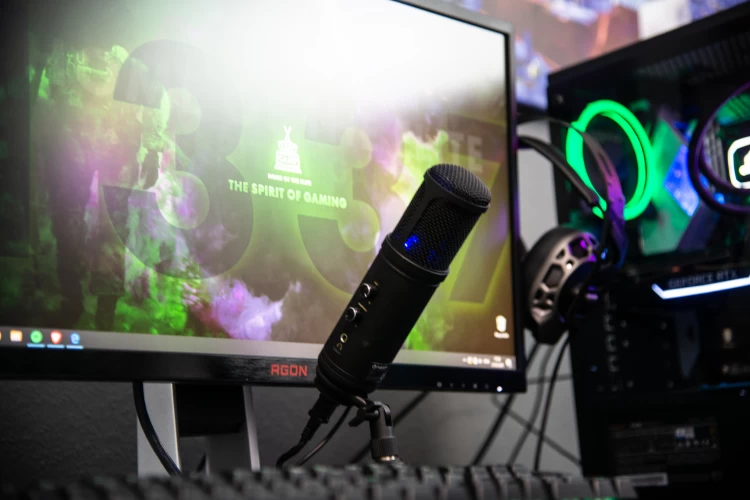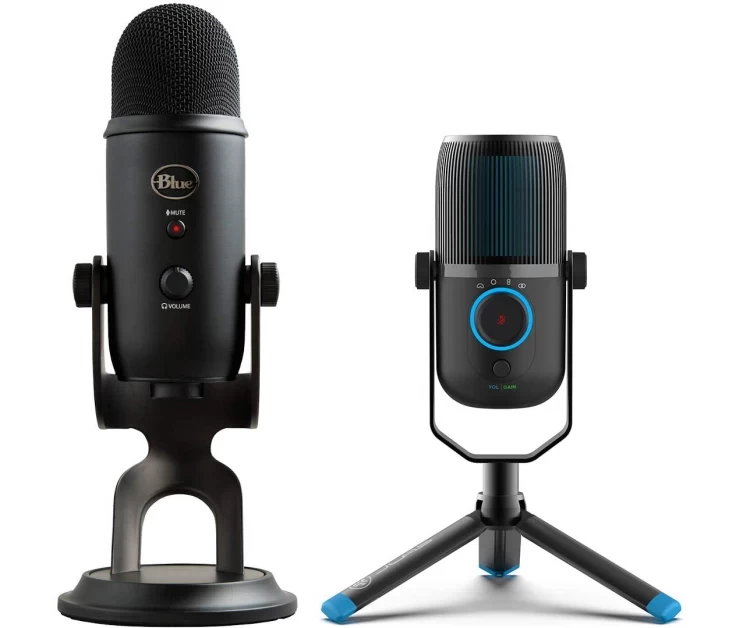Which Is Better, Blue Yeti or Jlab Audio Talk?
Updated on Mar 21, 2023
Table of Contents
If you're looking to buy the best USB microphone on the market, you might be wondering which is better; the Blue Yeti or the JLab Audio Talk? Indeed there's a lot of factors at play, so it won't be easy to answer, but being two of the most popular microphones in the USB space, we have to find out.
From a popularity standpoint, the Blue Yeti comes in hot, with over 21,000 reviews on amazon, and 1000+ answered questions, compared to the JLab Audio Talk, which has a meesly 22 reviews. But in reality, is this a fair comparison? No.
The Blue Yeti first launched back in 2009. From the date of this article's creation, that was over a decade ago! Now compare that one with the JLab Audio Talk, which came out in May of 2020. At the time of writing, that was less than 6 months ago!
However, being the absolute nerdy musicians we are, other people's opinions matter much less than what we get from our hands-on review of these mics. As you may have seen in our other studies, we have had a lot of time to play around with both the Talk series and the Yeti series across every model and are prepared to use the cold hard facts to figure out... Which is better?
USB Desktop Microphones
The first thing we must consider for this comparison is the history of USB microphones and the impact they've made on the industry. If we don't understand the technical side of these mics, it's hard to make a deep comparison.

Gaming Microphone In Front Of Computer
So from a "sound" perspective, we found a pretty noticeable difference between Blue Yeti & JLab Audio Talk. The Yeti was far more sensitive, picking up a more robust ambiance from the room, highlighting Talk's noise-canceling features. Unfortunately, that appears to work against them because we also found the recorded audio from the Yeti to have a much richer & fuller level of depth to it, where the Talk falls a little flat.
If you've read our article What Is A USB Microphone?, then you may have learned about how Phantom Power simplified the recording industry by standardizing the power supply required for condenser microphones to charge their inner electrical components. Many USB microphones have taken it a step further in the last decade or so by removing any needs for this power supply and utilizing the voltage output from your computer's USB port.
This simple functionality furthers the simplicity of recording quality audio from your home, offering an affordable & simple experience. Gone are when we needed preamplifiers, XLR cables, and software drivers to get our desired recordings.
Now, USB Microphones are nothing new. They began rising in popularity back in the early 2000s. So what's so special about them now?
I remember back when I was younger with my first USB Mic, struggling to set up the (included) physical audio interface, download necessary drivers, and learn how to use low-end DAW's so that I could get the audio quality of my headphone's microphone could've produced, how things have changed since then.
The modern generation gets the potential to have studio-grade condensers for an affordable price that they can literally plug in and record.
Comparison
Now that we understand the history of USB desktop microphones let's get to the part we've all been waiting for. Let's compare these mics!

JLab Audio Talk With Box Contents
Right off the bat, I have to comment on the pricing differences. The Blue Yeti series (at the time of writing) ranges from $99 (Nano) to $250+ (X / Pro), whereas the JLab Audio Talk series ranges from $50 (GO) to $150 (Pro). One of the highlighting features for USB microphones, in my opinion, is the affordable access to quality condenser microphones, and so it's an important factor for us to consider this pricing difference in the review. Do the quality differences reflect the same?
From a technical perspective, these microphones are very comparable. The base model offers three condensers, four directional patterns, and similar features, like the mute button & gain control. Where they differ is on the bit-depth & Sampling Rate (resolution factors). The base model of the Blue Yeti offers 16 bit-depths w/ 48kHz Sampling. Compare this to the JLab Audio Talk base model sporting 24-bit-depths (high standard) w/ 96kHz. Add in the price difference between the two models...
One factor we rank highly is that spec/price ratio, so we appreciate what the Talk features. However great that is, the sound is authentic.
So from a "sound" perspective, we found a pretty noticeable difference between Blue Yeti & JLab Audio Talk. The Yeti was far more sensitive, picking up more ambiance from the room, highlighting Talk's noise-canceling features. Unfortunately, that appears to work against them because we also found the recorded audio from the Yeti to have a much richer & fuller level of depth to it, where the Talk falls a little flat.

Blue Yeti X With Box Contents
As they're budget condensers, it would behoove you to have great noise-canceling features as many consumers don't have sound-proof rooms to do their gaming and streaming. However, as we see today, it comes at a cost, and I'm not sure it's worth the sacrifice.
Last but not least, weight. It might sound silly, but it matters! One of my favorite things to tell people when buying lower-grade electronics is that weight matters! This will be a reflection of the microphone's durability & quality. The JLab Audio Talk is pretty lightweight, which may be great for a vlogger who's constantly on the go, but then again, it's so light I'm afraid it could break in your bag.
The Blue Yeti offers much more durability, and the weight difference is pretty significant.
Pros & Cons
To summarize the pros and cons of each microphone, we've created separate lists to help highlight the strengths and weaknesses of each one.
JLab Audio Talk

JLab Audio Talk Pro Standing Up
Pros
- Much More Affordable
- Higher Quality For This Price Range
Cons
- Duller Sound
- Not Durable
- Gain Settings Don't Save
Best Used For
- Gaming Mic
- Podcast Mic
- Streaming Mic
Check Price: Go Model
Check Price: Base Model
Check Price: Pro Model
Blue Yeti

Blue Yeti Standing Up
Pros
- Wider Range Of Quality In Series
- Higher Level Of Depth & Accuracy
- Very Durable
Cons
- Less Affordable
Best Used For
- Gaming Mic
- Podcast Mic
- Streaming Mic
- Recording Vocals (Pro Model)
Check Price: Nano Model
Check Price: Base Model
Check Price: X Model
Check Price: Studio Blackout Model
Summary
So here is the moment you've all been waiting for, and I'm discouraged to say that the results are inconclusive! We already knew they would be and probably could've given you a heads-up, but there are too many factors for us to provide a definitive answer.
Your budget, environment, and needs will change the answer to this comparison.
From a pure quality standpoint, we would have to give the trophy to Blue Yeti. Overall, we found the sound quality had a more substantial level of depth, so we would recommend this microphone series over JLab Audio's Talk series if recording vocals is your primary function.
I am a fan of the JLab Audio Talk series, but they really fail to deliver on the sensitivity. Yes, many consumers buying <$150 microphones don't have sound-proofed rooms, and so there's a lot more risk of background noise, but this is a condenser microphone, and like one of my favorite articles says, Microphone Sensitivity Matters.
However, for the price range, the JLab Audio Talk spans across, the value is impeccable. The noise-canceling features may be working against you (while also helping), but we're talking about a condenser microphone between $50 & $150 that you can plug right into your laptop and record with. While the audio may be a bit flat, this is still great gaming and streaming microphone overall.
Posted on Sep 21, 2020
Gaming
Have questions for us? Email us at info@musiciannerd.com
